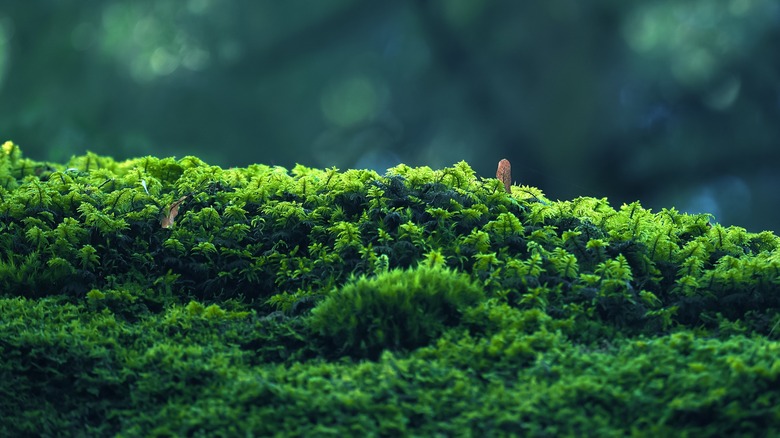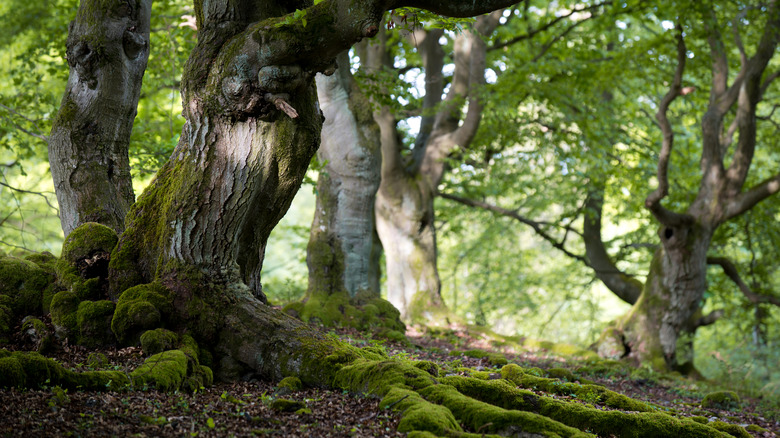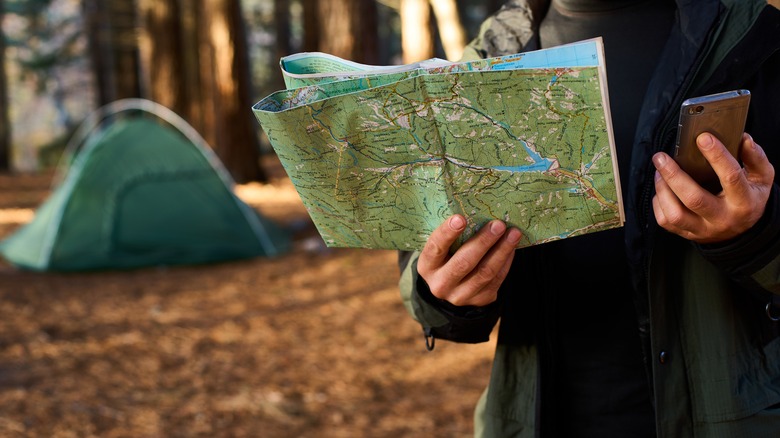Believing This Myth About Moss Could Get You Lost In The Woods
There's a lot of folklore out there about what to do when you are lost in the woods, and while some of it can be useful, a few myths are more likely to lead you astray than take you back to safety. One of these myths is that moss always grows on the north side of a tree. While it is true that moss tends to grow on the north side of trees, this can change completely depending on the forest and part of the world you are in.
This happens because moss prefers to grow in shaded and damp conditions and which direction tends to be shaded depends on where you are. This is because, in the Northern Hemisphere, the sun moves from east to west through the southern sky. Therefore, the north side of a tree gets the least sunlight. However, in the Southern Hemisphere, the opposite is true and the south side of a tree gets the least sun. While this may help you predict where moss is most likely to grow, the problem is that if there is enough shade and humidity, moss will grow on any side of a tree.
Reasons moss may grow on another side
While moss is more likely to grow on the north side of a tree in theory, in practice, moss can grow on any side that is shaded. As pointed out by Michigan State University, the canopy of a forest typically provides enough protection from the sun for moss to grow just about anywhere. However, even in a forest with a thin canopy and lots of natural light, certain geological features like slopes, mountains, and canyons can create areas of shade that cause moss to grow on a different side.
Furthermore, climate makes a big difference. According to a Redditor who commented on a post discussing this exact issue, in the Pacific Northwest, climate conditions are so wet and humid that "moss grows on all sides of trees" and it also grows on everything else from cars to yards, sidewalks, and houses.
All in all, there are just too many variables for moss to be used as a reliable navigation tool. So, what can you use instead? It seems that the tried and tested method of using a small compass is the best way to go. This is because compasses are not only reliable but also cheap, lightweight, and easy to use. However, if you find yourself lost without a compass and in need of finding which way is north, you can use the sun which is a fair bit more reliable than moss.
Does other forest survival folklore hold up?
Now that you know that the idea that moss always grows on the north side of a tree is not true, you may be wondering how well other common forest survival folklore holds up to the test. As it turns out, it's a mixed bag. For example, it is true that if you are lost in the woods and find a river you should follow it downstream. The reason for this is that rivers tend to get bigger and join other rivers as they flow downstream, and more towns and cities are located on large rivers. Furthermore, rivers often take the path of least resistance and flow downhill, this means that you will be able to better conserve energy while following a river downstream.
On the other hand, it is not true that all white mushrooms are safe to eat. This can be seen with the case of the white amanita mushroom which looks very ordinary but can cause coma and death. In fact, mushrooms are the last thing you should eat off the trail in emergencies, no matter their color because it is easy to mistake a poisonous look-alike for an edible mushroom. Furthermore, mushrooms are quite low in calories and fats making them a bad survival food, even if you find one that you are 100% sure isn't poisonous.


